What are the 5 C's of Survivability? Cutting Tool – Combustion Device – Cover – Container – Cordage
People carry a variety of different items in their packs depending on the situation, environment, and planned activities. This is called adapting to the situation, which is what self-reliance and survival are all about. It has been my passion over the years to research what base items are really needed. Through practical exercise, trial and error, I have found you can simply add or subtract a few essentials. These items are dependent mainly on a specialized task, environmental or seasonal change.
This thought process leads us to the 5 C’s of Survivability. There are certain items that are a must for any survival or self-reliance scenario and these items should be considered first for any Pack, B.O.B. (Bug Out Bag) or Car/Truck type emergency kit. The basis of the 5 C’s is the items that either need special materials to construct or that take the most energy to create from natural materials in the wild in a survival situation.
So, consider for a moment you are caught in a 72-hour survival type scenario in the wilderness. What things do you absolutely have to have to make it through even if you are a bit uncomfortable or low on supplies? Well, a survival knife would be the main item for a scenario like this. With the right survival knife and a bit of skill, you can create anything else you absolutely need like a Fire Set, Shelter, Container, and or Cordage. These are critical items needed in controlling your core temperature. CCT (Controlling Core Temperature) is the main necessity in a survival situation as Hyperthermia or Hypothermia is a leading cause of death of those lost or stranded in the wilderness.
With these 5 items, you can effectively accomplish all your basic survival needs for a short period adding in your self-reliance. Now, let’s look at each one a little more closely.
Choosing Your Survival Knife and Cutting Tools
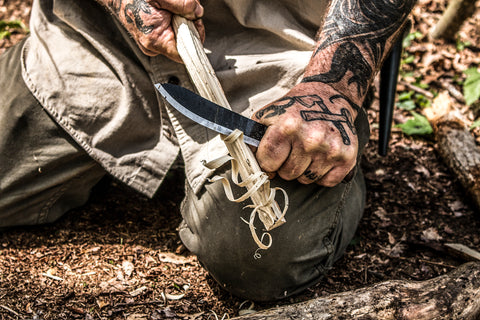
The Cutting Tool you carry should, at a minimum, be able to complete any and all tasks in the event of a total equipment failure. This is needed from any tool you choose. A tool for this task should be something that is not too large as you may need it for fine carving or food preparation. To that end, it’s recommended to have a 5 or 6” blade on a full tang survival knife. You could have a small hand ax instead if you are skilled in using it for delicate jobs. Many people today seem to carry multi-tools or pocket knives as a standard emergency tool. These are great as an extra tool as they are useful for many things. However, they should never be your first or only choice in this category as they are just not large enough or strong enough to be the one tool you trust your life one in a survival situation. It’s also recommended that your tool is made from High Carbon steel and not stainless or other exotic metal as it needs to be as multi-functional as the rest of your gear (we will address this as we go). The spine of any knife you chose as your survival knife should have a 90-degree flat ground spine so that it can be used for striking a Ferro rod. This saves you from using the blade for this function thereby conserving your resources and not dulling the blade unnecessarily. The reason for the High Carbon steel blade is for sparking Flint or other hard rock material on the spine to add in fire starting if other methods fail, get damaged or become lost. Remember that any items used for the kit must be multi-purpose so that you can eliminate unneeded weight and can accomplish more with less. The “less weight” concept is to conserve resources like the calories (energy) spent to carry your kit along with the hydration lost from heavy loads and sweating.
Choosing Your Combustion Devices
Combustion devices should be capable of the most bang for the buck as well. The most important thing needed from an emergency combustion device is SUREFIRE! When I say sure-fire, it is not necessarily things like lighters that may or may not produce a guaranteed flame in wet environments or after you have been turned over in your canoe. We’re referring to items like Mini Infernos and Ferrocerium Rods. These will work wet or dry and produces a sure flame for several minutes to aid in the ignition of marginal tinder sources like semi-green vegetation or damp shavings and barks. The great thing about this combination is the Ferro Rod for its thousands of potential strikes. What needs to be realized is that the Mini Inferno is an absolute survival solution to create fire and should never be used if dry tinder is available in the area; this conserves another resource when absolutely needed.
Choosing Your Cover and Shelter Equipment
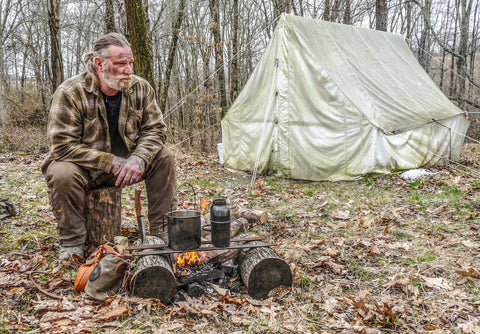
Cover/Shelter items (for this purpose) should be light and compact but multi-purpose. It’s ideal to carry at least a poly tarp of 8x10, a 6 mil 55-gal trash bag/drum liner along with an emergency re-usable space blanket. This small roll will give you tons of versatility and adaptability at a minimal cost. Other uses for these items include rain catchments, sleeping bags, ground coverings, rain gear, and signaling (if the tarp has an orange side). This piece of gear can be very beneficial for short-term survivability and rescue.
Choosing a Container
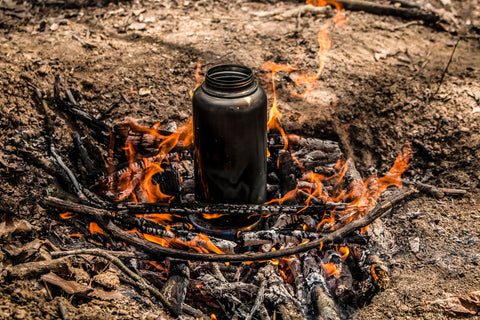
Containers are one of the most valuable pieces of gear you will ever use. Without water, we cannot survive for extended periods even if we have accomplished CCT. For this reason, we must ensure this container can accomplish several tasks very well. It must be watertight, capable of being placed into the fire for water disinfection, as well as cooking if necessary. It also should be constructed of thick-wall materials to withstand shock from being dropped and banged around. The two we suggest is a Stainless Steel 32oz Bottle or Canteen & Cup Set.
Choosing Cordage
Cordage is something that is a must-have to its countless uses, and it can be very time consuming and difficult to make in a survival or self-reliance situation. We always tell students to ensure that any cordage is multi-ply so that it can be broken down to smaller fibers if needed. There are two main forms of cordages and one that it’s preferred over the other for several reasons. Until recently the main go-to cordage for any survival or self-reliance use has been 550 parachute cord. True paracord has 7 inner strands so that it can be broken down for use on smaller tasks like fishing and it is very strong and light. The main disadvantage to these inner strands is that they tend to fray out very easily and they are difficult to work with for certain tasks like trapping or snaring as the entire cord is actually too large in diameter to make an effective small game and bird snares. The preferred cordage is something called Tarred Bank Line or Mariners Net line. This is not Masons line like sold at hardware stores, this is different. It is three-ply cordage that again is very strong and can be purchased up to 340 lbs breaking strength. It takes up less room and weighs less than paracord in addition to being more functional for things needed in a survival scenario like trapping, fishing, and lashings. It is a great material for small game snares and traps and is also dark-colored (usually black), which adds to its camouflage abilities when used for fishing and hunting. It also stretches less than paracord so lashings and bindings on tools and shelters do not loosen over time. Along with its variety of other uses, it also cost around half as much as paracord and does not add any more weight. All around, it's considered a first cordage choice.
Understanding these five items and the comprehensive uses for them is the first step to understanding what it really takes to reduce the size and weight of your kit and effectively maintain true survivability. What is even more important to understand is the skill and ability to replace these items using natural material if and when needed as that is the true measure of your own skills.


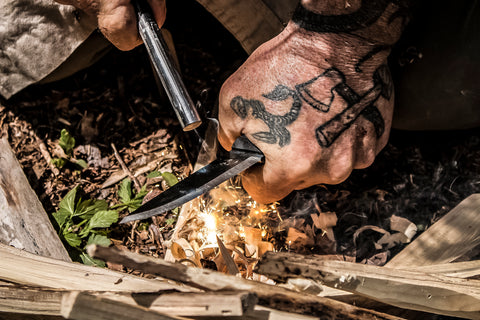

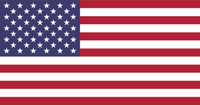

Packing for the environment (and region) is key. I live in Arizona: Few trees, less water, no random stream or lake full of fish. Tarp/Cover & cordage is critical all year round. The tarp/cover can double as a blanket in the colder months if need be. My advice is to maintain a water-bullet ratio of 1:1 (One gallon of water to cartridge in your magazines or arrows in your quiver). The real point is: A life straw is useless when there are no lakes, ponds, streams, or rain. Plan your pack around the reality of your enviornment! I have a designated ECW kit (Extreme Cold Weather) that gets re-checked and included in my Jeep from September-to-May. Temperature from Phoenix to Flagstaff can go from 110 in the day to 30 degrees at night. I have learned the hard way – forgetting kit in a rush to head North for the weekend builds a lot of character… Plan ahead, pre-pack and kit-up what you know you’ll need based on common sense and what you wish you had previously. That ECW kit has a wool blanket, some mylar/survival “blankets”, gloves, pyle cap, wool socks, scarf, and poncho. My Jeep has literally everything I need to sustain for at least a week. My mindset, based on training and experience, is: DO NOT leave your vehicle! If I have to abandon and go afoot, I have a walk-out kit (“get home bag” some call it). The most likely event and use-case for ditching my Jeep would be some terrible event inside a city. If I break-down in the wilderness I would stay within 100 yards of my truck at all times (gathering materials, maintaining signal fires, etc…). Inner-city vehicle ditch would be tragic, but if it was that dire, I would prioritize water, umbrella and/or coat, cane, bandanna (cravat or whatever), extra socks, knife/weapon > literally in that order.
You all are awesome! I have learned a lot from Mr. Canterbury’s you tube videos. I have my kit almost ready to get out and camp. Thanks so very much.
I keep a 5Cs get home kit behind the seat of my truck. It all fits in a cramped manner inside the steel water bottle. Due to size constraints, I use a leather sheathed mora classic craftsman 612, among other goodies, including a mini inferno, a small brass whistle, contractors plastic bag, a life boat ration bar, a really small flashlight, cordage, bic mini, 2 water purification tabs, a $20 dollar bill (Not all survival is wilderness.)
Your sein twine should be the tarred type.
If it isn’t it will unravel like crazy. You folks may know its sold by numbers for sizes #9 being as small as you would need for say sewing with a large sail needle. And #72 or so for big jobs. I will always have a soft spot for 550cord because I was a paratrooper, but, I’ve been a tallship sailor for about 30 years now and sein twine is part of my everyday life.
The 5 C’s make sense for the most part. The cordage I would defenitely replace with a calling device (calling out for help), like a whistle, signal mirror or even your cell phone.
I do take cordage but if I had to choose only 5 items to survive untill rescue I would leave it and bring a whistle instead. In my long life cordage has made some things easier but it was never really neccesary. Getting the attention of the rescuers is. There are many real life stories about this.
I think the carrying system is important and an item in itself so that’s 6 C’s. If you can’t carry it easily you are likely to not have it with you.
In my life as an survival instructor (since 1986) I never did meet anybody that needed to make a fire by the flint and steel method and had to use the knife for it. I never did meet anybody that needed to make a fire by flint and steel period. I’ve done it and seen people do it but for practise. It’s fun and a good skill to master like any skill.
Carbon steel does rust. The rust on the edge dulls your blade and you need to sharpen more often. Sharpening takes energy. I also think that around a 4 inch blade is enough and it saves weight and therefore energy. So a stainless knife with about a 4 inch blade is my primary (survival)knife.
Of course I do appreciate you teaching people and I do understand that a lot of the younger people got inspired to go out in the bush by what you did. Maybe you should become a spokesman for the American Bushcraft Association.